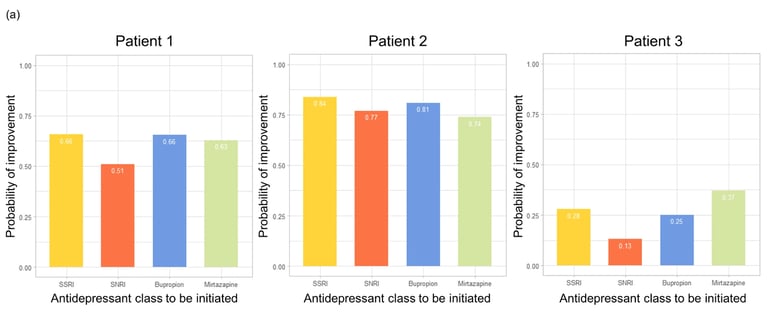Digital Pharmacist Digest - 🔎 Adverse event detection in paediatrics, predictive models for choice of antidepressant, and more
19th May, 2023
Kevin Sam
3 min read
Hiya 👋
We’re back with another edition of the digital pharmacist digest!
Here are this week's links that are worth your time.
Are you enjoying this digest? It would mean a lot if you'd consider forwarding it on to someone that you think would also appreciate it!
Thanks for reading,
Kevin
📖What I'm reading
🩺Patient Safety - Imperfection in adverse event detection: is this the opportunity to mature our focus on preventing harm in paediatrics?
An excellent opinion piece on a systematic review of adverse events in paediatric inpatient care. The differences between paediatric and adult quality improvement and adverse events, and the use of electronic health records to apply more proactive-focused Safety-II concepts. "Investigation of successful adaptation events through a Safety-II lens may increase our understanding of how things go right and AEs (ie, things going wrong) are prevented. With the burgeoning growth of healthcare analytics and the widespread sophistication of EHRs, healthcare institutions now have more data than ever to characterise, analyse and replicate improvement successes"
🩺💻 Health informatics and 🤖 Artificial Intelligence - AI-assisted prediction of differential response to antidepressant classes using electronic health records
A showcase of the applied use of deep neural networks and AI to provide personalised, predictive care selecting the antidepressant therapy that has a higher probability of improvement. Importantly, the authors recognise it is focused on the model and further research is required in the applied use of such models in practice. "We show that antidepressant response can be accurately predicted from real-world EHR data with AI modeling, and our approach could inform further development of clinical decision support systems for more effective treatment selection."
🤖 Artificial Intelligence - There Is No A.I. | The New Yorker
“For years, I worked on the E.U.’s privacy policies, and I came to realize that we don’t know what privacy is. It’s a term we use every day, and it can make sense in context, but we can’t nail it down well enough to generalize. The closest we have come to a definition of privacy is probably “the right to be left alone,” but that seems quaint in an age when we are constantly dependent on digital services. In the context of A.I., “the right to not be manipulated by computation” seems almost correct, but doesn’t quite say everything we’d like it to.
A.I.-policy conversations are dominated by terms like “alignment” (is what an A.I. “wants” aligned with what humans want?), “safety” (can we foresee guardrails that will foil a bad A.I.?), and “fairness” (can we forestall all the ways a program might treat certain people with disfavor?). The community has certainly accomplished much good by pursuing these ideas, but that hasn’t quelled our fears. We end up motivating people to try to circumvent the vague protections we set up. Even though the protections do help, the whole thing becomes a game—like trying to outwit a sneaky genie. The result is that the A.I.-research community communicates the warning that their creations might still kill all of humanity soon, while proposing ever more urgent, but turgid, deliberative processes.”
“Anything engineered—cars, bridges, buildings—can cause harm to people, and yet we have built a civilization on engineering. It’s by increasing and broadening human awareness, responsibility, and participation that we can make automation safe; conversely, if we treat our inventions as occult objects, we can hardly be good engineers. Seeing A.I. as a form of social collaboration is more actionable: it gives us access to the engine room, which is made of people.”
🤖 Artificial Intelligence - Pandas AI
Something I'm keen to have more of a play with to incorporate generative AI in any data science work. "PandasAI is designed to be used in conjunction with Pandas. It makes Pandas conversational, allowing you to ask questions about your data and get answers back, in the form of Pandas DataFrames. For example, you can ask PandasAI to find all the rows in a DataFrame where the value of a column is greater than 5, and it will return a DataFrame containing only those rows"
Any comments provided are personal in nature and do not represent the views of any employer
Stay up-to-date with the Digital Pharmacist Digest
Any comments provided are personal in nature and do not represent the views of any employer


